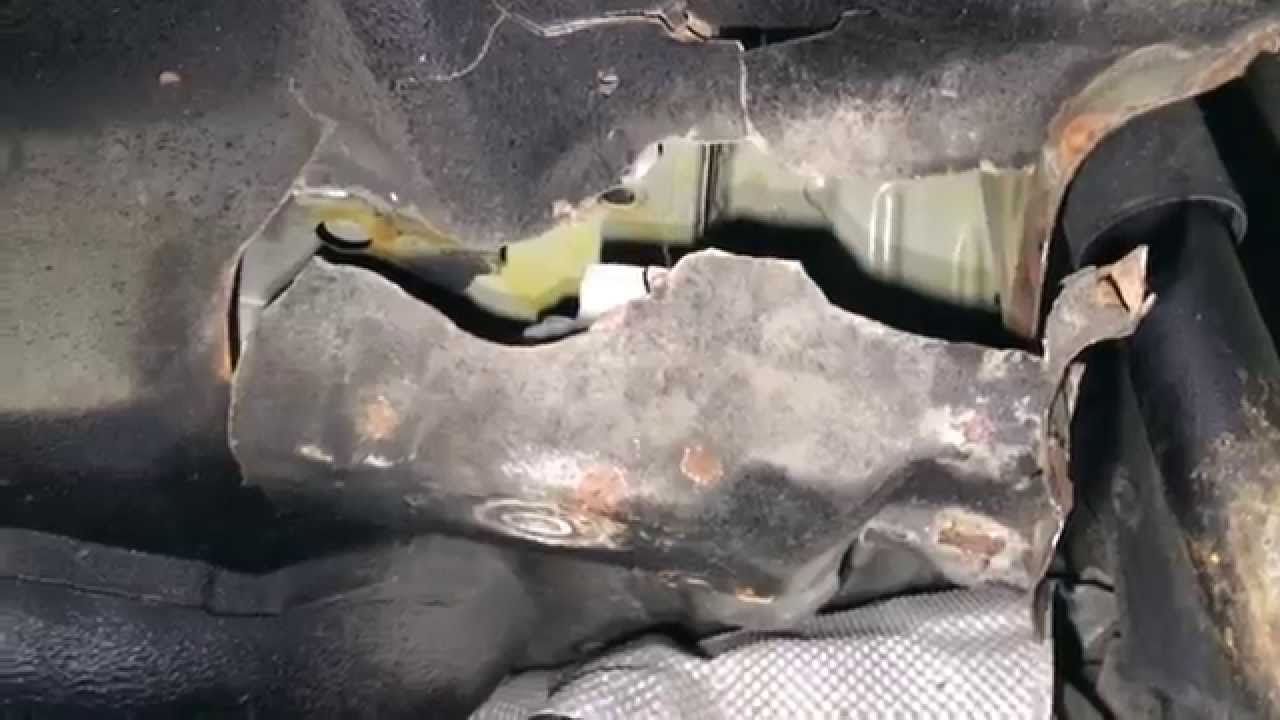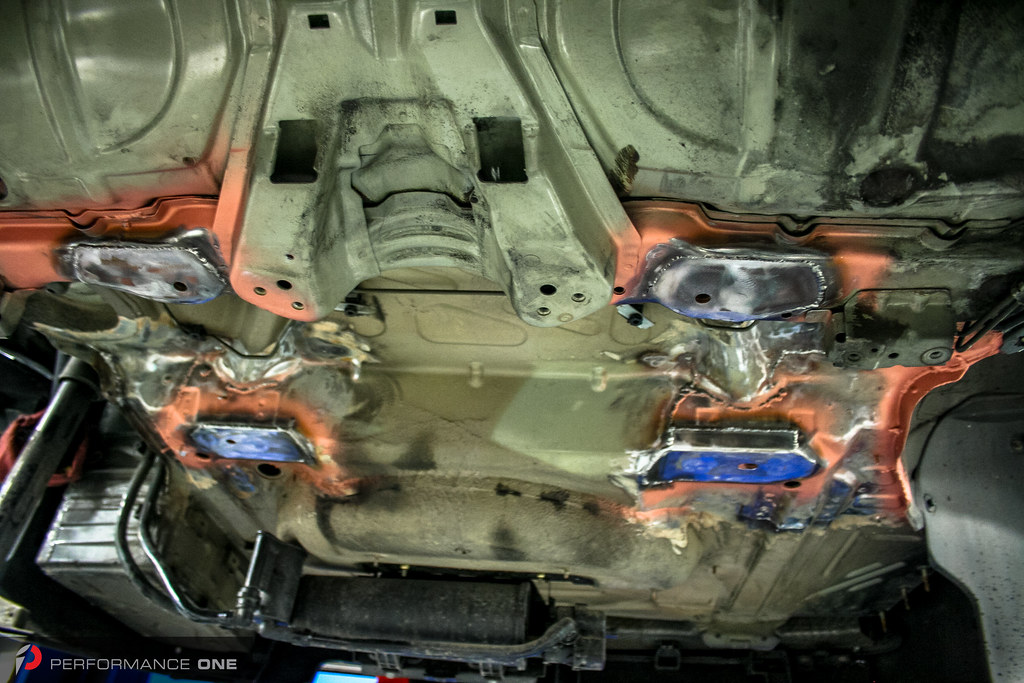
“The Big 3” Understanding the BMW E46 M3 Subframe Issue & The Solution
A notorious problem that has affected many E46 M3 owners—the subframe issue. In this article, we will explore what the E46 M3 subframe issue is, why it occurs, its consequences, and what owners can do to address or prevent it.
Click here to see pricing on the subframe reinforcement kit
Click here to see our recommended aftermarket part vendors

Understanding the E46 M3 Subframe Issue
The E46 M3 subframe issue is a structural problem that primarily affects the rear subframe of the vehicle. The rear subframe is a critical component that supports the rear suspension, differential, and other important parts of the car. The issue arises from the way the subframe is attached to the chassis of the vehicle.

Why Does It Occur?
Several factors contribute to the E46 M3’s subframe issue:
- Design Flaw: The primary reason behind the problem is a design flaw in how the rear subframe is mounted to the chassis. BMW used spot welding to secure the subframe mounting points to the chassis, and over time, this method can lead to cracks and structural weaknesses.

- Performance Driving: The E46 M3 is often driven hard by enthusiasts who appreciate its performance capabilities. Aggressive driving can put additional stress on the subframe and exacerbate the issue.

- Age and Mileage: As these cars age and accumulate mileage, the problem becomes more prevalent. The stresses of everyday driving, combined with potential neglect of maintenance, can lead to subframe issues.
Consequences of the Subframe Issue
The consequences of the E46 M3 subframe issue can be severe if left unaddressed:
- Handling Compromised: A damaged or cracked subframe can affect the car’s handling and stability, making it less enjoyable and potentially unsafe to drive.
- Costly Repairs: Repairing the subframe issue can be an expensive and labor-intensive process, involving extensive disassembly and welding work.
- Reduced Resale Value: A known subframe issue can significantly reduce the resale value of the vehicle, making it harder to sell or trade-in.

Addressing and Preventing the Issue
- Inspection: If you own an E46 M3 or plan to buy one, it’s crucial to have the subframe inspected regularly by a qualified BMW technician or specialist. Look for signs of cracking or damage in the mounting points and surrounding areas.
- Reinforcement Kits: Several aftermarket companies offer subframe reinforcement kits designed to strengthen the subframe mounting points. These kits can help prevent the issue from occurring or worsening.
- Welding and Repair: If the subframe issue is already present, it’s essential to have it repaired by a skilled welder or at a specialized shop. This typically involves welding in reinforcement plates to strengthen the affected areas.
- Regular Maintenance: Proper maintenance, including suspension checks and bushing replacements, can help reduce the stresses placed on the subframe.

While the BMW E46 M3 is celebrated for its performance and design, the subframe issue is an unfortunate aspect of ownership that owners should be aware of. Regular inspections, preventive measures, and addressing the problem early can help E46 M3 enthusiasts enjoy their cars without the shadow of the subframe issue looming over them. Despite this challenge, many owners continue to cherish their E46 M3s for their outstanding driving dynamics and timeless appeal.

The need to reinforce the subframe on the BMW E46 M3 is primarily due to a design flaw in the way the rear subframe is mounted to the chassis. This design issue has been a concern for many E46 M3 owners and has led to the need for reinforcement to prevent or address potential problems. Here’s a more detailed explanation of why subframe reinforcement is necessary:

- Design Flaw in Subframe Mounting Points: The BMW E46 M3, like many other vehicles, uses spot welding to attach the rear subframe mounting points to the chassis. These mounting points are crucial for securing the rear suspension components, differential, and other rear-end elements. The issue lies in the original design, where the spot welds were not sufficient to handle the stresses that the car can encounter during aggressive driving or even regular road use.
- Stresses from Performance Driving: The E46 M3 is known for its performance capabilities, and many owners enjoy driving it aggressively, whether on the track or spiritedly on twisty roads. This type of driving puts additional stress on the rear suspension and subframe components. Over time, the repeated loading and unloading of these components can lead to fatigue and cracks in the spot welds, compromising the structural integrity of the subframe.
- Age and Wear: As the E46 M3 has aged, the original spot welds have become more susceptible to corrosion and weakening. This is especially true in regions with harsh climates where road salt and moisture can accelerate corrosion. The combination of age and wear can exacerbate the subframe issue.
Consequences of an Unreinforced Subframe:
If the subframe issue is left unaddressed, it can lead to several problems:
- Handling and Safety: A damaged or cracked subframe can negatively impact the car’s handling and stability. This can compromise both performance and safety, making it less enjoyable to drive and potentially unsafe.
- Expensive Repairs: Repairing a damaged subframe is a labor-intensive process that often involves disassembling a significant portion of the rear suspension and welding reinforcement plates onto the subframe mounting points. This can be a costly repair.
- Reduced Resale Value: A known subframe issue can significantly reduce the resale value of the vehicle, making it harder to sell or trade-in.
Click here to see our recommended aftermarket part vendors

Subframe Reinforcement:
To address the subframe issue, many E46 M3 owners opt for subframe reinforcement. This process typically involves adding reinforcement plates or brackets to the subframe mounting points. Reinforcement kits are available from various aftermarket suppliers and are designed to strengthen the mounting points and distribute the load more effectively, reducing the risk of further damage.

In summary, the need to reinforce the subframe on the BMW E46 M3 arises from a design flaw in the original spot welding of the subframe mounting points, combined with the stresses of performance driving, age, and wear. Reinforcing the subframe is a proactive measure to prevent structural issues and maintain the car’s handling and safety characteristics.














